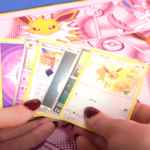
How To Grade & Clean Your Sports Cards Before Submitting to PSA – Guide
I wanted to share some insights and a step-by-step tutorial on how I grade and clean raw, ungraded cards I purchase online before submitting them to PSA. This process has helped me assess which cards are PSA-worthy and ensure they’re in the best possible condition prior to submission, especially for bulk orders. Below is a summary of my process, which I also cover in detail in my latest video.
- Initial Inspection: When the cards arrive, I inspect them right away to save time later. This initial check helps me identify which cards are potential candidates for PSA grading. During this step, I also remove them from their cases for a closer look, as I’ll clean and inspect them all at once.
- Condition Assessment: For cards with intricate foil finishes, like the 1993-94 Fleer Ultra Power inserts, I start by looking for whitening, chipping, and corner wear, which are common issues with these types of cards. Even slight whitening or rounding on the corners can reduce a card’s grade, so I closely examine both front and back edges and corners.
- Comparing Grades: To understand grading standards, I compare my cards to previously graded examples. For instance, I have an SGC 8 that serves as a reference for understanding what minor flaws PSA and other grading services will tolerate.
- Centering and Edges: I pay close attention to centering and edge quality. Centering may vary due to the card design, but keeping it as close to even as possible is ideal. Cards without borders can sometimes pass with minor centering issues if other aspects (like surface and corners) are near perfect.
- Cleaning:
- For surface cleaning, I use a paper towel and moisture from my breath—no chemicals. I fold the paper towel over the card carefully to avoid snagging corners, then gently buff any spots.
- For foil or chromium cards, extra care is taken with their sensitive surfaces, avoiding too much pressure to prevent whitening on black edges.
- Peeling Protective Coatings: If a card has a damaged protective layer, removing it can improve its surface. I take my time with tweezers and paper towels to avoid damaging corners while peeling.
- Practice Makes Perfect: It’s essential to practice these techniques on low-value cards before handling high-value ones.
If you have any questions, feel free to reach out, or leave a comment on the video. I’ll also be hosting a live Q&A later this week to go over this process in real-time. Thanks for watching, and I’ll see you all soon!










Post Comment